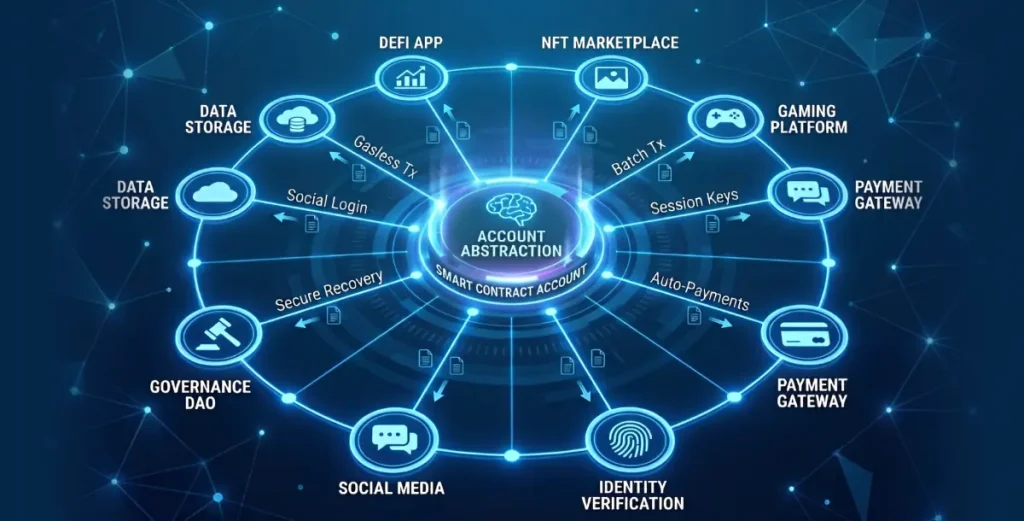Tokenization is a strategic tool being adopted by banks, asset managers, fintechs, and even traditional enterprises looking to digitize and distribute value with greater efficiency. This 2025, more companies are exploring how blockchain-based tokens can streamline operations, unlock liquidity, and expand investor access.
But tokenization isn’t one-size-fits-all. From real-world assets like property and bonds to utility tokens that power platforms and incentivize users, each token type demands a different legal, technical, and business architecture.
Why Tokenization Matters for Enterprises
Tokenization enables businesses to represent real-world or digital value on a blockchain in the form of tokens. These tokens can be programmed, traded, and integrated across platforms—bringing benefits such as:
-
Faster settlement and reduced intermediaries
-
Fractional ownership and improved liquidity
-
Programmable compliance and transferability
-
Greater transparency and auditability
Banks tokenize bonds and deposits, real estate firms tokenize property shares, and fintechs tokenize reward points, payments, or in-app utilities. The result: new distribution models, new investor segments, and more agile capital management.
Understanding Token Types: Asset-Backed vs Utility
Before launching any tokenized product, enterprises must first define the nature of the token they intend to issue. This is more than a technical choice—it has major implications for legal compliance, user expectations, ecosystem integration, and long-term business strategy. Broadly, tokens fall into three categories: asset-backed, utility, and hybrid.
Asset-Backed Tokens
Asset-backed tokens are digital representations of real-world, off-chain assets such as real estate, gold, equity shares, fund units, or even carbon credits. These tokens function as proof of ownership or entitlement, and their value is directly tied to the underlying asset.
Because they represent financial rights, they are typically subject to securities laws and must comply with investor protection regulations, KYC/AML requirements, and custody rules. Most jurisdictions treat these tokens as regulated financial instruments, meaning that issuers must often register or partner with licensed entities to operate legally.
From a business perspective, asset-backed tokens are valuable tools for unlocking liquidity in traditionally illiquid markets. Real estate developers, private equity firms, and fund managers can fractionalize holdings, allowing more flexible investor participation, smaller ticket sizes, and potentially more active secondary trading.
However, issuance requires coordination with custodians, legal advisors, and compliance platforms to ensure proper asset linkage, auditability, and legal enforceability.
Utility Tokens
Utility tokens are primarily used within a specific platform to grant access, incentivize usage, or pay for services. These tokens do not convey ownership or investment rights and are often treated as functional instruments—like credits or prepaid points.
Common examples include tokens that unlock app features, pay for subscriptions, or offer discounts. In enterprise use cases, utility tokens are popular in loyalty programs, digital platforms, and network-based ecosystems.
Unlike asset-backed tokens, utility tokens operate in a more flexible regulatory environment, though this flexibility comes with caveats. If a utility token is marketed as an investment or sold in a way that resembles a fundraising round, it may still fall under securities classification.
This means businesses must structure token sales carefully, focusing on user functionality rather than profit expectation to avoid regulatory missteps. Utility tokens also depend on smart contract logic to define their behavior—such as burn mechanisms, inflation controls, or tiered access privileges—which should be clearly documented and audited.
Hybrid Tokens
Some tokens blur the line between utility and investment. These hybrid tokens might represent ownership in an asset while also functioning as access passes, voting tools, or reward instruments within a digital platform.
For example, a token could represent a share in a revenue-generating property (asset-backed) while also allowing the holder to vote on platform governance (utility). These dual-use cases can add flexibility and engagement for users—but they require careful structuring to avoid legal ambiguity.
Enterprises considering hybrid models must work closely with legal advisors to separate rights clearly—possibly even issuing dual tokens or embedding governance features in compliant ways. This model is especially relevant for DAOs, gaming platforms, and tokenized funds, where engagement and ownership intersect.
Token Architecture and Blockchain Selection
Once the token type is defined, selecting the right blockchain infrastructure becomes the next critical step. The architecture you choose will determine your project’s performance, scalability, user experience, and compliance capabilities. For enterprises, especially those in finance, this is a foundational decision that affects how tokens are issued, managed, and integrated into the broader ecosystem.
Blockchain Type
Public (e.g., Ethereum, Solana)
Public blockchains are open, decentralized networks that anyone can access. Ethereum and Solana fall into this category and are widely used for consumer-facing tokens, decentralized finance (DeFi) applications, and globally distributed digital assets. Their advantage lies in ecosystem maturity and global interoperability. However, public chains may pose challenges around transaction fees, scalability, and regulatory oversight.
Permissioned (e.g., Hyperledger, Quorum)
Permissioned blockchains like Hyperledger Fabric or Quorum are often favored by banks, governments, and enterprises needing granular access control and compliance-ready environments. These networks restrict participation to approved entities and can be customized for specific industry use cases, such as interbank settlements or internal asset registries.
Token Standard
ERC-20/ERC-721 (Ethereum)
Token standards define how tokens behave and interact with wallets, platforms, and smart contracts. ERC-20 (for fungible tokens) and ERC-721 (for NFTs) are the most widely adopted and supported globally, making them ideal for projects requiring seamless integration across DeFi, custodians, and wallets.
TRC-20 (TRON)
TRC-20 is optimized for low-cost transfers and is often used for payment-heavy applications, especially in markets like Southeast Asia.
SPL (Solana)
Solana’s SPL standard is designed for high-throughput and low-latency use cases such as microtransactions or real-time gaming economies.
Custom Token Standards
Some businesses may opt for custom token standards if they require unique logic or cross-platform behavior. While this offers flexibility, it may reduce compatibility with existing infrastructure and require more extensive audits and maintenance.
On-Chain vs Off-Chain
Store Token Metadata On-Chain
Where and how data is stored is a key architectural decision. On-chain storage ensures that all token-related data—such as ownership history or asset linkage—is permanently recorded and publicly verifiable. This is especially important for asset-backed tokens, where transparency and auditability are crucial for regulatory trust and investor confidence.
Off-Chain Storage
Off-chain storage, on the other hand, allows sensitive or heavy data (e.g., legal contracts, financial records) to remain private or be stored in a more scalable format. This model is often used in hybrid frameworks, where only proofs or hashes are stored on-chain. It helps reduce transaction costs and comply with data privacy regulations while maintaining verifiable authenticity.
Custody Model
Self-Custody (Non-Custodial Wallets)
Custody is particularly critical when tokenizing real-world assets or working with regulated clients. Self-custody solutions, such as browser wallets or hardware wallets, provide users with direct control of their assets but come with risks like key loss or user error.
Third-Party Custodian
Third-party custodians—especially licensed digital asset custodians—offer institutional-grade security, compliance tools, and integration with insurance and audit frameworks. For financial institutions, this is often the preferred model.
Integrated Institutional Custody
Some enterprises also choose to integrate custody directly into their platform through APIs, enabling seamless user onboarding while retaining control over key management and compliance processes.
Ultimately, financial institutions and regulated businesses often lean toward permissioned chains, EVM-compatible standards, and compliant custody solutions that can scale with evolving regulatory requirements. Whether launching a tokenized bond, digital currency, or in-app token system, the architecture you choose today will define your platform’s efficiency, trustworthiness, and growth potential.
Legal & Compliance Framework
For any enterprise planning to issue tokens—especially in finance or asset management—regulatory compliance is non-negotiable. Unlike consumer platforms that may operate in regulatory grey areas, businesses face heightened scrutiny from financial regulators, tax authorities, and institutional stakeholders. This is why engaging legal counsel early in the tokenization journey is essential.
Securities classification
The first legal hurdle most issuers face is determining whether their token qualifies as a security. Asset-backed tokens, such as tokenized equity, debt, real estate, or funds, often fall under securities law in major jurisdictions. This means they may require registration with regulators, exemptions for limited offerings, or strict investor disclosure procedures. Misclassifying a security token as a utility token can expose a company to legal penalties, forced delistings, or even lawsuits. Legal teams must perform a thorough Howey Test analysis (in the U.S.) or equivalent frameworks abroad to determine compliance pathways.
Jurisdictional compliance
Different jurisdictions treat tokenized assets in vastly different ways. For example, the U.S. Securities and Exchange Commission (SEC) takes a strict view of tokens as securities, while the European Union’s MiCA (Markets in Crypto-Assets) regulation introduces new rules for both utility and asset-referenced tokens. Singapore and the UAE have developed more flexible licensing regimes to attract compliant issuers. Enterprises operating across borders must structure their token offering to comply with local laws on issuance, custody, trading, and marketing. In many cases, this involves creating separate offerings for different regions or using intermediaries with local licenses.
KYC, KYT, and AML
Know Your Customer (KYC), Know Your Transaction (KYT), and Anti-Money Laundering (AML) obligations are central to any compliant tokenization platform. This means token issuers must verify user identities, screen transactions for suspicious activity, and maintain records in accordance with local regulations. For enterprises, integrating these controls directly into the smart contract or token issuance platform is now considered best practice. Platforms must also comply with the Travel Rule (for cross-border transactions), especially when stablecoins or fiat on/off ramps are involved.
Custody and investor rights
When tokens represent legal claims—such as shares in a fund or ownership of a building—investor rights must be clearly defined and enforceable. This includes voting rights, dividend distributions, redemption processes, and dispute resolution. Institutional investors will also expect assurances around how the underlying assets are held, managed, and audited. Many tokenization projects use licensed custodians or Special Purpose Vehicles (SPVs) to safeguard assets and issue tokens in a regulated, investor-protected structure. Others adopt trust-based frameworks that isolate risk and simplify tax and governance obligations.
Build With the Right Infrastructure Partner
Tokenization is changing how value is owned, transferred, and monetized. But building it in-house can be risky and resource-intensive.
At ChainUp, we offer full-stack infrastructure for businesses exploring token issuance—from asset tokenization platforms and smart contract deployment to custodial wallets, DEX modules, and KYC/KYT integration.
Whether you’re tokenizing funds, launching a loyalty program, or building a marketplace, ChainUp provides secure, scalable, and compliant tools to accelerate your project. Let’s talk about how tokenization can work for your business.




